Are You and Your Employees Prepared to Evacuate or Lockdown Your Facility?
Miller & Martin PLLC Alerts | October 13, 2015
by Mike Mallen
The events of July 16 in Chattanooga have left us with many still unanswered questions. Our thoughts and prayers continue for those affected by this tragedy.
Some of the questions employers have been asking are, "What would we do if faced with a threat at our facility during work hours?" "Do we have an emergency action plan in place for any situation aside from a fire drill?" and "If not, or even if so, what should the components of such a plan be?"
As a service to our own and other communities, we want to provide this brief overview in response to some of these questions.
Hazard Assessment and General Emergency Action Plan Components
An emergency action plan should be tailored to your worksite and consider all potential sources of emergencies. At a minimum, the plan should include procedures for reporting emergencies, evacuation and lockdown plans, route assignments and procedures for employees who will perform essential services during an emergency. Your plan should also include rescue and medical duties, particularly regarding certain known hazards like chemical exposure based on the chemicals used in your workplace.
Alarms
Your plan also should include a way to alert employees to evacuate or take other action and explain how those who first become aware of the threat should report it, both to other employees and, as necessary, to outside authorities through wireless panic buttons or other similar resources. Consider a distinctive emergency alarm and communication system, and test it at least quarterly to ensure alarms will be heard and understood by all employees.
Organization
Determine the conditions under which an evacuation or lockdown would be necessary, create a clear chain of command including work area "directors" and a "coordinator," and designate the person or persons in your business who are authorized to order an evacuation or lockdown. Larger worksites may need to develop a code word to verify that an evacuation or lockdown order is legitimate.
Safe Places
You should also designate safe places where employees are to go in the event of an evacuation or lockdown. The work area "directors" should be responsible for making sure everyone from their assigned work area is in the designated safe area and for notifying a designated "coordinator" if they are not, so other work groups can be contacted to see if they are with them, etc.
Directors and Coordinators
Employees also should know who the work area directors and the coordinator is, so they can contact the coordinator if, for some reason, their director is not available for direction. A back-up coordinator should be designated for this reason as well. One director should not be responsible for more than 20 employees if possible. More than one back-up coordinator also should be designated if you have more than 100 employees.
The directors and coordinators also should have a list of all those in their area along with their cell phone numbers, and all employees should have their work area director and the coordinators' cell phone numbers.
Evacuation Routes and Lockdown Safe Areas
Both a primary and secondary evacuation route and lockdown safe area should be designated for each work area. The routes to both of these should be well lit. Also consider other factors like, "Will the routes be wide enough to accommodate the number of evacuating personnel and the safe areas large enough to accommodate them?"
Medical Assistance
If your company is not large enough to have a formal medical response program, you should consider other ways to provide medical and first-aid services in the event of an emergency. Ideally, at least one person in each work area should be trained on how to administer basic first aid and have a first aid kit available in his/her work area. If medical facilities are available near your worksite, you can make arrangements for them to handle emergency cases.
All employees should be trained on protocol regarding responding to a medical emergency, as far as calling 911 but also notifying a supervisor or other designated person when they are doing so.
If some employees in a work area have medical issues which could be critical to know in an emergency, the designated medical response employees also should have access to this information (which otherwise should be maintained in a confidential "Emergency File" where others cannot readily access it except in the case of an emergency).
Employee Information and Training
Obviously, you can have the greatest emergency action plan in the world, but if your employees do not know about it, it is worthless.
There are two key ways to communicate information about the plan. One is with postings in fixed locations such as company bulletin boards, on employee-only accessible intranet sites, in break areas or by the time clock. These postings ideally should be one page containing just the basic information of: a pictorial description of the primary and secondary evaluation routes, a description of the evaluation and lockdown safe areas, and the cell phone numbers of the work area directors and main and back-up coordinators.
The second is with employee training. The information from the posting and the location of the postings should be reviewed with employees at least annually and with all new hires as part of orientation. An evacuation and lockdown drill also should be conducted annually just as you (hopefully!) conduct annual fire drills. (The evacuation drill can be the same as the fire drill.)
Coordination
It also may be useful to coordinate your emergency action plan with other companies or employee groups in your building to ensure the effectiveness of your plan. If you rely on assistance from local emergency responders, it also may be helpful to coordinate your emergency plans with these organizations.
OSHA Requirements
OSHA requirements for emergencies are located in the Agency's General Industry Occupational Safety and Health Standards (29 CFR 1910). Some of the key requirements are located in sections E, H, I, J, K, L, R, and Z.
Conclusion
This general overview is designed to help you get started creating or reviewing your emergency action plan. For more assistance in these efforts, please contact Mike Mallen or any other member of our Workplace Safety Practice Group.

